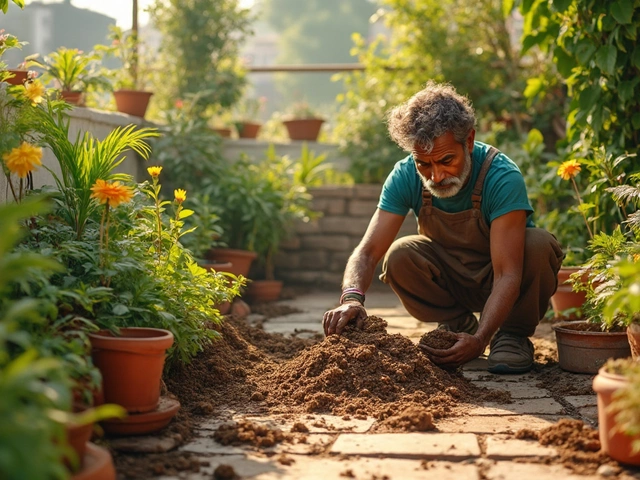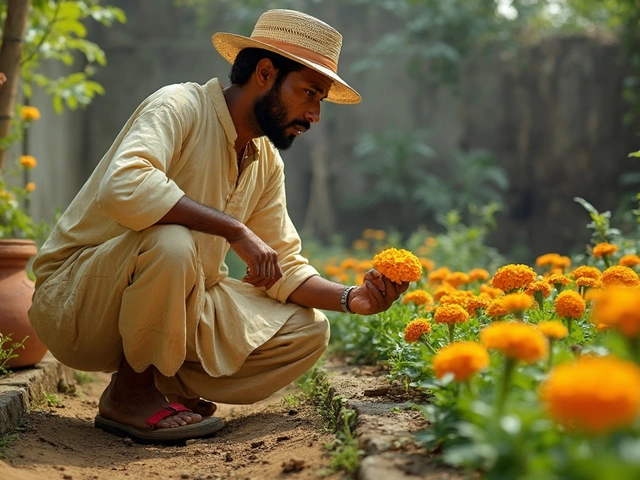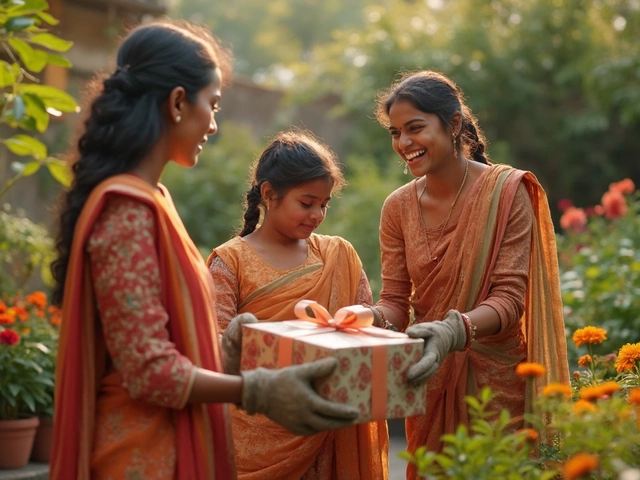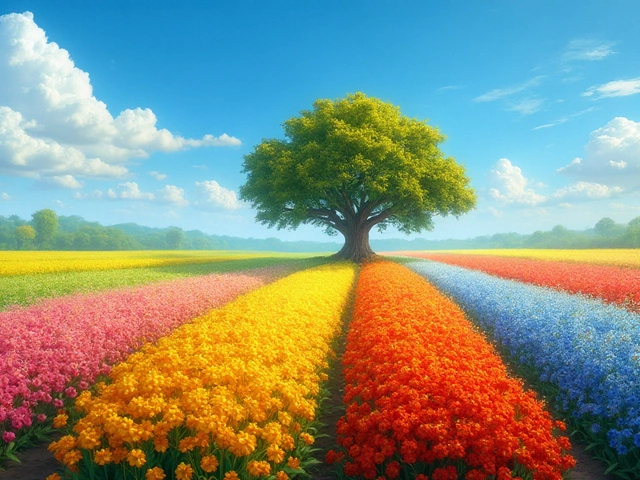If you think eco friendly gardening is only for people with acres of land or endless free time, trust me, it’s way simpler than that. You don’t need fancy equipment or a science degree. It starts with a few smart choices, like skipping the chemical sprays and using what you already have lying around.
First up, take a hard look at your space. Are you working with a sunny patch in the backyard, a few containers on a balcony, or maybe even just a windowsill? Your answer shapes just about everything: what you’ll grow, how you’ll water, and the kinds of tools you’ll collect. Fun fact—some of the most productive gardens happen in raised beds and containers, not traditional plots.
Don’t rush out and buy new stuff. Reusing old pots, grabbing buckets, or even making a compost bin from a storage tote cuts waste and saves cash. It’s all about giving things a second life instead of sending them to the landfill. Start paying attention to what’s already in your trash—could those coffee grounds or veggie peels become garden gold? Absolutely.
- Why Go Eco Friendly in the Garden?
- Planning Your Green Space
- Choosing the Right Plants
- Soil Health and Compost Hacks
- Water Smarter, Not Harder
- Low Waste and Upcycled Ideas
Why Go Eco Friendly in the Garden?
There’s more at stake in your backyard than looks. Traditional gardening relies on chemical fertilizers and pesticides, and those don’t just stay in your soil. They can run off into local rivers and lakes every time it rains, making water unsafe for animals—and for us. The EPA reports that over 70 million pounds of pesticides are applied to American lawns and gardens every year. All that extra chemical load stresses native bees, butterflies, and birds.
Switching up your habits to build an eco friendly garden means cleaner water, fewer chemicals in your food, and more wildlife stopping by. When you skip synthetic fertilizers and use compost, you’re feeding the soil instead of just the plants. Healthy, living soil acts like a filter, soaking up carbon, holding water during dry spells, and making nutrients easily available to your tomatoes or peppers.
Going green is also about saving resources and cash. Native plants use a lot less water and don’t need constant babysitting with sprays or plant food. If you swap a grass lawn for a patch of clover or wildflowers, you’ll mow less, use less water, and give native pollinators a buffet.
- Chemical-free gardens support birds, bees, and bugs that eat pests for you, so you deal with fewer infestations.
- Composting keeps food scraps out of landfills, where they would otherwise produce methane, a super-potent greenhouse gas.
- Using what you already have cuts down on waste—nobody needs a fancy plastic watering can when an old milk jug does the job.
Going eco friendly in the garden isn’t just good for the planet. It’s safer for kids and pets, and you’ll spend less at the garden center. Plus, your space turns into a mini-oasis for butterflies, birds, and good insects you actually want around. That’s a win all around.
Planning Your Green Space
Setting up your eco friendly garden starts with some simple groundwork. Don’t worry about being perfect—just aim for smart choices that fit your routines and lifestyle. Think about what you want from your garden. Is it fresh salad greens, pollinator plants for bees, or maybe herbs you can snip while cooking?
The best place to start is sunlight. Most vegetable and herb plants need at least 6 hours of full sun each day. Grab a notebook and watch where the sun hits longest. You’ll want your edible plants close to the sunlight. If you’ve got shadier spots, those are awesome for leafy greens or native wildflowers.
Next, check out your soil. Good soil means less hassle later. Get a small trowel and dig in—healthy soil feels crumbly and smells a bit earthy. If yours is hard as concrete or crumbly sand, don’t sweat it. You can always build it up with compost or start with raised beds.
Now, map out what goes where. Here’s a quick way to organize your garden based on your goals:
- Eco friendly garden for food: Grow what you eat most often—lettuce, tomatoes, peppers, herbs.
- Pollinator zone: Mix in flowers like marigold, sunflowers, lavender, and native options that bees and butterflies love.
- Compost corner: Tuck a small bin or pile somewhere out of the way but easy to reach.
Make it easy to water, too. Try to grow thirstier plants together, and keep them close to a water source, whether that’s your tap, a rain barrel, or even a DIY drip setup.
If you’re a numbers person or just want to see at a glance what helps most, check out this data. Urban gardens using eco-friendly methods can cut food waste, save money, and lower emissions compared to store-bought produce:
| Benefit | Traditional Garden | Eco Friendly Garden |
|---|---|---|
| Water savings | -- | Up to 50% |
| Food packaging waste | High | Low |
| Average grocery savings/year | $0 | $400–$600 |
Before you dig, measure your space and sketch a layout—even a squiggly drawing helps. Cluster taller plants where they won’t block sun from shorter ones. Leave paths you can walk through, and try to keep everything you’ll harvest often close to where you step outside. The goal? Less wasted water, fewer effort, and more homegrown results.
Choosing the Right Plants
Getting your plant selection right is a game-changer for any eco friendly garden. It’s not just about looks—your choices can seriously affect how much water you use, how many pests you attract, and how well your soil holds up. The main rule? Work with nature, not against it.
If you’re stuck on what to plant, go local. Native plants already get your climate, pests, and soil so you won’t need to baby them with extra water or chemicals. Examples? If you’re on the US East Coast, black-eyed Susans and bee balm are tough and loved by pollinators. Living in California? Try CA poppy or manzanita. You’ll also attract more butterflies, bees, and birds by picking local flowering species.
- Look up your USDA Hardiness Zone (or your region if you’re not in the US)—this helps you find plants adapted to your average temperatures.
- Consider perennials. Unlike annuals, you plant them once and they come back every year, which means less digging and waste.
- Mix in some herbs or veggies that do double duty: basil and thyme can repel pests, and lettuce or greens grow well even in pots.
- Avoid invasive species, even if they’re popular at local garden centers. They crowd out native plants and can mess up your local ecosystem fast. Good sources for ‘do-not-plant’ lists are local extension offices or gardening groups online.
If you want to see the numbers, here’s a simple table on water savings with native vs. non-native choices:
| Plant Type | Average Water Needed (gallons/year) | Extra Fertilizer Needed? |
|---|---|---|
| Native Flowers (e.g., Coneflower) | 5-20 | No |
| Non-Native Flowers (e.g., Petunia) | 50-80 | Sometimes |
| Native Shrubs (e.g., Serviceberry) | 15-30 | No |
| Non-Native Shrubs (e.g., Boxwood) | 70-100 | Often |
Mix things up by building a biodiverse patch. Different heights, flowering times, and leaf types make your garden more resilient. Plus, it means you’ll have something blooming or producing all through the season, which keeps beneficial bugs fed and happy. And don’t forget cover crops—fast growers like clover can fill bare spots, keep weeds down, and even boost soil health.

Soil Health and Compost Hacks
Get this: healthy soil supports everything in your eco friendly garden. If your dirt is sad and lifeless, your plants won’t stand a chance without chemical fertilizers. Good news? You can improve your soil—no matter how bad it looks—by working smarter, not harder.
Start with compost. This stuff is garden magic. Compost adds nutrients, boosts microbes, and helps soil hold just the right amount of water. And you don’t need a giant pile to get started. A decent-sized storage bin, some holes for airflow, and a mix of basics will do.
- Layer your food scraps (veggie peels, coffee grounds) with dry stuff (leaves, shredded cardboard, straw).
- Keep the pile moist but not soggy. If it’s as damp as a wrung-out sponge, you’re in the right zone.
- Turn it every couple of weeks to let air in—oxygen keeps it from getting stinky.
You’ll know it’s done when it smells good and looks like crumbly dark dirt. Toss that compost around your plants or mix into the soil before planting. Skip meat, dairy, and anything greasy in your pile—they attract unwanted bugs and don’t break down well at home.
If you’ve got clay, sandy, or rocky soil, compost is your best friend. But you can also boost soil health with simple tricks:
- Plant cover crops (like clover or vetch) over winter to fix nutrients and stop erosion.
- Try no-dig gardening. Just lay compost or mulch on top—this protects soil and helps worms do their thing.
- Avoid stepping in your garden beds—compacted soil suffocates roots and slows water drainage.
Healthy soil means happier plants and less water wasted. Want to see the lasting difference? Check out this quick soil health comparison:
| Soil Type | Water Retention | Plant Growth Rate | Nutrient Levels |
|---|---|---|---|
| Compost-rich | High | Fast | Excellent |
| Poor, compacted | Low | Slow | Poor |
If you remember one thing: feed the soil, not just the plants. It’s like setting up a buffet for your garden, and everything grows better as a result.
Water Smarter, Not Harder
Pouring gallons of water onto your plants might feel helpful, but it’s usually a massive waste—especially during hot summers or in cities where water isn’t cheap. The trick is to use just enough at the right time, so your eco friendly garden thrives and your water bill doesn’t spike.
First, try watering early in the morning or late in the evening. Less sun means less evaporation, so more water goes to the roots instead of disappearing into thin air. Skip watering in the middle of the day unless you see wilting and it’s an emergency.
Mulching is your secret weapon. A 2-3 inch layer of straw, wood chips, or even dried leaves will keep the soil moist longer, meaning you water less. Mulch also keeps weeds in check and helps soil health—a total win.
Not all plants need the same amount of water, either. Get to know what’s in your garden. Drought-tolerant plants like lavender, sage, and some native wildflowers barely need extra water once they’re established. For veggies, group together the thirsty ones—like tomatoes and cucumbers—so you’re not watering everything just for their sake.
If you want to go the extra mile, consider drip irrigation or soaker hoses. These systems send water straight to the roots and cut down on waste by as much as 30–50% compared to sprinklers. Even a simple watering can with a spout gives you better control than a wide spray.
| Garden Type | Water Use (gallons per sq. ft.) |
|---|---|
| Traditional Lawn | 1.0–1.5 |
| Mulched Veggie Bed | 0.5–0.75 |
| Drip Irrigation | 0.3–0.5 |
| Drought-Tolerant Plants | 0.1–0.2 |
Got a rain barrel? Use it! One full 50-gallon barrel covers a 100-square-foot bed for a whole week. Even putting a bucket under your downspout works in a pinch.
- Water deeply, but less often—roots grow stronger this way.
- Check soil moisture before watering. If the top inch is dry, it’s time.
- Fix leaky hoses, so you’re not wasting water from unnoticed drips.
- Use greywater from rinsing veggies to water ornamentals (not food crops).
A few simple changes save water, money, and time—plus, plants tend to grow better with less fuss.
Low Waste and Upcycled Ideas
There’s no rule that says gardening has to be wasteful or expensive. In fact, the best eco friendly gardens often rely on stuff you’d normally throw away. Reusing and upcycling keeps materials out of landfills and cuts back on the need to buy new plastic or other synthetic products. Even the pros agree—according to a report from the EPA, yard trimmings and food scraps made up over 22% of what Americans tossed in landfills in 2022. Imagine the impact if more folks turned that “trash” into compost for their own gardens.
“Gardening is as much about recycling as it is about growing. Upcycling isn’t just good for the planet; it saves money and sparks creativity.” — Teri Speight, author and horticulturist
Want practical examples? Here are a few low-waste hacks that actually work:
- Use empty yogurt containers or tin cans as pots for seedlings. Just poke a hole in the bottom for drainage.
- Old pallets can be turned into compost bins or vertical gardens—just make sure they’re not treated with harmful chemicals (look for the HT stamp for heat-treated).
- Save eggshells and crush them directly into the soil to boost calcium for plants like tomatoes and peppers.
- DIY bird feeders from empty plastic bottles—easy, fast, and lets you reuse something that would end up in the trash.
- Make watering cans by punching holes in the lids of empty milk jugs. It works just as well as what you’d buy, and it’s free.
Composting is a no-brainer if you want less waste and healthier plants. Just about any kitchen scrap that isn’t meat or dairy can become compost. Check out the quick info below on what can (and can’t) go into a home compost pile:
| OK for Compost | Skip These |
|---|---|
| Veggie peels Fruit scraps Coffee grounds Tea bags Eggshells Grass clippings | Meat & dairy Grease/oil Sick plants Pet waste Glossy/coated paper |
Upcycling is just part of making a eco friendly garden. When you use what you’ve already got, you save cash, skip the landfill, and keep your garden as green as possible—in every sense.





